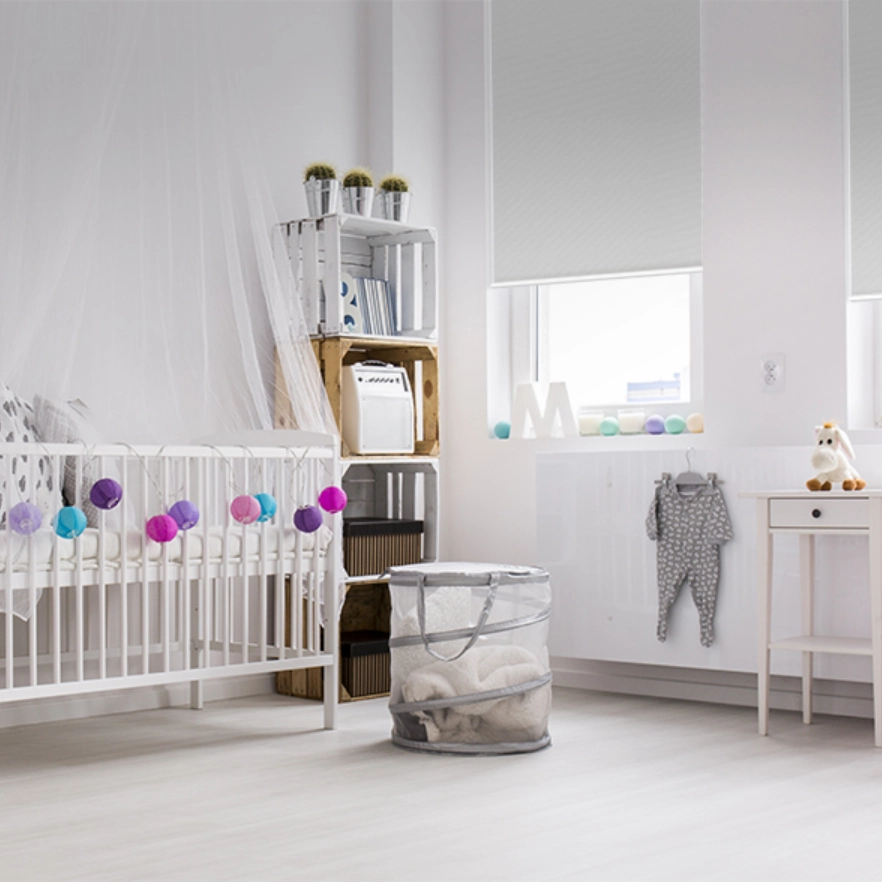Keeping your curtains mould-free
During the colder months, condensation can become a real problem. With the contrasting temperatures of the cold outside and warm inside, plus the lack of sunshine hours and increased rain, condensation can cause problems with mould and mildew, especially on curtains. How, the battle’s not lost, there are a few things you can do to protect your curtains from mould.
What makes mould and mildew grow?
Mould and mildew grow when there’s moisture and warmth in the home and things are kept aired and dried. Just like everything absorbent in your home, as temperatures go up the moisture in the air evaporates and is absorbed into soft surface, like the fabric of your curtains. As things cool, the moisture changes back from its gaseous state to being closer to its liquid form and the curtains absorb the moisture and the bacteria it holds. Repeated over time, this is what causes the nasty growths
The difference between mould and mildew
Mould is a broad term that encompasses multiple identical nuclei and can grow beneath and penetrate the surface of affected material. Mildew is a type of mould that grows on the surface and can therefore be much more easily treated/removed. When its alive, moulds are orangey or reddish in colour. The black patches we see are actually the hibernating mould spores waiting for the sun to warm them up and bring them back to life.
Where does all this moisture come from?
We live in a pretty humid climate in New Zealand at the best of times, but it’s not all weather related. Cooking, showering, drying clothes, unflued gas heaters and simply breathing and existing all produce moisture content within our homes.
Preventing moisture build up
Install a home ventilation system of some kind.
Crack the windows during the day to allow some air flow through your home. North facing windows are best.
Get a dehumidifier. Emptying this once a day (or more!) will really open your eyes to how much moisture is in your home.
Pop a DampRid moisture absorber container on the windowsill behind the curtains.
Install a ShowerDome and extractor fan in the bathroom.
Make sure your clothes dryer is vented to the outside.
Install a rangehood in the kitchen and use lids on pots and pans.
Change your curtain rail brackets to 80 or 100mm so the curtains are further from the walls and the windows allowing for more air circulation. Keep in mind however, this will likely lower their thermal insulating capabilities.
Invest in double-glazing. Although this does not prevent mildew it can work to slow the onset.
Minimise what mould growth feeds on. Clean soft furnishings regularly, clean windows and wipe down window surrounds with warm soapy water.
Check plumbing for leaks.
Maintaining an even inside temperature throughout the house helps stop moist air from condensing.
Insulate well. Start with the ceilings and under floor as a priority, then the walls.
Close curtains/blinds as soon as the sun goes down.
How to treat mould and mildew on your curtains
Regularly check curtains for signs of mould or mildew and spot clean as necessary. A common home remedy for mould is a white vinegar and water sprayed on the affected areas but be sure to spot test in case it discolours your fabric.
If there is a significant amount of mould on your curtains, you may need to replace them. Always check the fabric care instructions to avoid damaging the fabrics.

